Indoor air safety
Learn about health risks for the air in your home like smoke, mould, radon gas, dust, lead, chemical products, carbon monoxide.
On this page
What are the health effects?
Indoor air may contain contaminants such as tobacco smoke, dust particles, mould spores, and chemicals, such as formaldehyde (from carpets, plywood, paints, adhesives etc.) or volatile organic compounds (VOCs), like benzene (found in cigarette smoke and other products like glues and paints, etc). These contaminants circulate through the air and are distributed throughout our homes.
Our health can be affected when harmful substances in the air enter our lungs when we breathe; our stomach/intestine when we eat foods where these particles have settled; or through our skin when we touch surfaces where these particles have settled.
Some effects may only be apparent after a period of repeated exposure (such as radon and lead), while others may have immediate effects (such as carbon monoxide and volatile organic compounds). Health effects associated with airborne contaminants can trigger and worsen existing breathing problems, such as:
- wheezing
- coughing
- sneezing
- eye, nose, and throat irritations
- asthma attacks
Even small actions - like taking off your shoes when you come inside or changing out of your work clothes when you get home - may reduce the chances of letting dirt that may contain various contaminants into your home. These habits are even more important if you work in or travel through areas where you might come into contact with products or materials that pose a health risk.
Here are some other simple steps for maintaining good indoor air quality and minimizing these health risks.
Smoke
Smoke can pass through cracks under and around doors, so no place in your home or car is safe from smoke! Toxic chemicals in cigarette smoke can also stick around even after the smoker has put out the cigarette, cigar, or pipe. Third-hand smoke can get trapped in hair, skin, fabric, carpet, furniture, and even toys. It builds up over time and each time another cigarette is lit, more smoke gets trapped and gets into people's lungs and bodies.
Tips: What can you do?
- By making sure your home and car are as smoke-free as possible, you will reduce harmful contaminants and keep the air clear.
- Install a smoke-detector on each level of your home.
Mould
Reducing indoor moisture is key to reducing potential health risks from moulds.
Ventilation
One of the easiest ways to improve the air in your home is through adequate ventilation.
This will remove stale indoor air and reduce the amount of air pollutants inside your home and help control humidity levels.
- Open windows and doors.
- Use kitchen and bathroom exhaust fans.
- Use and maintain your ventilation system according to manufacturer guidelines.
Tips: What can you do?
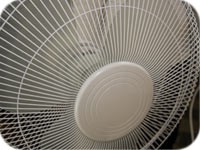
- Turn on fans that vent to the outdoors or open windows where moisture can collect such as when showering or boiling water on the stove.
- When drying clothes, either on racks or in a dryer, make sure the moisture can escape outdoors.
- Be sure to clean up spills and leaks right away. Dry out the area and dispose of wet materials that may promote mould growth such as paper, cardboard or fabric. Fix the source of moisture to avoid mould re-growth.
- Do not store items in your home that may allow mould to grow if they become wet, such as paper products, cardboard, leather, old clothes or fabric, especially items stored in the basement and closets.
- If you discover mould on hard surfaces in your home:
- Clean up small areas of mould with soapy water and dry the surface completely.
- Get help from an appropriate authority (such as Environmental Health Officer) when the mould covers areas larger than one square meter.
Need more information?
Radon gas
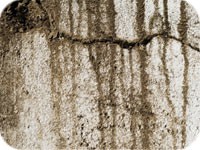
Radon is a radioactive gas that has no colour, smell or taste. It is formed by the breakdown of uranium, a natural radioactive material found in soil, rock and groundwater.
When radon is released from the ground into the outdoor air, it gets diluted to low concentrations and is not a health concern. However, in enclosed spaces, like basements, it can sometimes accumulate to high levels, which can be a risk to the health of you and your family.
The only known health effect associated with exposure to radon is a higher risk of lung cancer. When someone is exposed to both radon gas and tobacco smoke, the risk of lung cancer is even higher.
Tips: What can you do?
- Testing your home for radon is the only way to know if you have a radon problem. You can not see it or smell it. The levels of radon vary greatly across Canada. Even homes on the same street can have very different levels of radon. You can purchase a test kit at a local store, over the phone or through the internet. Ask your local Environmental Health Officer (EHO) for help if needed.
- Take action if the radon level is above the 200 becquerels per cubic metre (Bq/m3) guideline by completing the following.
- Air out your basement, crawl spaces and other enclosed areas regularly.
- Seal cracks and openings in your home's foundation walls and floors, and around pipes and drains.
- Paint basement floors and foundation walls with sealant and concrete paint.
- Cover exposed dirt floors in basements, cold rooms, storage areas, crawl spaces and other areas with moisture proof material (plastic sheeting).
Dust and dust mites
Reducing dust and dust mites in your home will help reduce irritants, which can cause allergic reactions and aggravate asthma and other breathing problems. Dust mites are so small that we can barely see them. They live in beds, carpets, furniture, pillows and blankets.
Tips: What can you do?
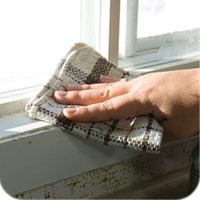
- Dust your home regularly from top to bottom. Use a damp cloth to avoid raising dust into the air.
- Reduce clutter so dust will have fewer places to settle and to make cleaning easier.
- Vacuum carpets and any fabric-covered furniture to reduce dust build-up. Vacuuming will also remove pet dander, which may cause allergic reactions in sensitive people. Keep pets out of bedrooms and off furniture to reduce your family's exposure to pet dander.
- Use a mattress and pillow protector, and vacuum mattresses to minimize dust mites. Wash sheets once a week in hot water.
Lead
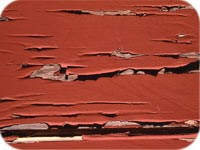
Exposure to lead may cause harmful health effects to the nervous system, blood system and kidneys, especially in children and unborn babies. Exposure to even low levels of lead can cause learning disabilities and other harmful effects on the development of children. Pregnant women must also be careful, because lead can cross the placenta and affect their unborn child.
Lead was often added to paint made before 1960. For homes built between 1960 and 1990, small amounts of lead may still be in some of the paint used. The lead in old paint (on walls or on furniture) can be released into the air and dust if paint is poorly maintained, wearing out or chipping. As well, older homes may also have lead pipes or lead solder may have been used to join the copper pipes. The lead can then be released in your drinking water when you turn on the tap. Please see section on drinking water for more tips on how to protect your family from lead.
Tips: What can you do?
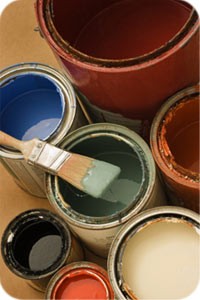
- Do not use sanders, heat guns or blowlamps to remove old paint. They create dust and fumes that contain lead. Use a chemical paint stripper, preferably one that comes in a paste form that you can apply with a brush. Chemical strippers contain potentially harmful substances, so read the instructions carefully and use them outside when you can. Keep children and pregnant women away from the work area. Always wear goggles, gloves and an appropriate breathing mask and make sure the area is well ventilated.
- Never burn waste oil, coloured newspaper or magazines, batteries or wood covered with lead paint in or near your home. Doing this can cause lead fumes to be released. Please talk to your local Environmental Health Officer on disposal options for these items.
- Clean your home regularly to remove dust particles that may contain lead. This cleaning is especially important for surfaces that young children might touch or chew.
- Select toys suitable for a child's age group, and make sure to read and follow all warnings, safety messages and instructions that come with the toy.
- If you use lead solder in a hobby, such as in joining pieces of stained glass, use a good quality breathing mask, keep surfaces clean and keep children and pregnant women out of the area. Otherwise, use lead-free solder.
- If you are concerned about your exposure to lead, talk to your doctor, who can order a test to measure the amount of lead in your blood.
Chemical products
Some of the products that we buy and use in our homes can pose threats to our health, if not used according to directions. These products include household cleaners, personal-care products, and pesticides approved for indoor use. Protect everyone in your home, including those with sensitivities, young children and pregnant women by following these tips.
Recognize these warning symbols

Poison: the contents of containers with this symbol are poisonous if swallowed, touched or inhaled.
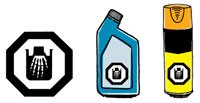
Corrosive: the contents of containers with this symbol will burn skin or eyes and can also burn the stomach if swallowed.

Flammable: the contents of containers with this symbol catch fire easily if near heat, flames or sparks.
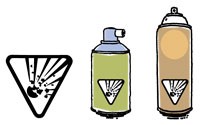
Explosive: containers with this symbol can explode if heated or punctured.
Each warning symbol also has one of these words under it.
- CAUTION: means a temporary injury may occur from improper use of the product. Death may occur after extreme exposure.
- DANGER: means that the product may cause temporary or permanent injury, or death.
- EXTREME DANGER: means that being exposed to even a very low quantity of the product may cause death, or temporary or permanent injury. Be very, very careful.
Tips: What can you do?
Follow directions on the labels that tell you how to use, store and dispose of products safely.
- Always wear protective clothing (such as gloves, masks, eye protection) when using and handling chemical products.
- Open your windows when using any product with ingredients that may pose a risk.
- Teach children the symbols for DANGER!
- Make sure chemical products are stored properly:
- Keep all chemical products out of sight, away from food, and out of reach of children (not under the kitchen sink).
- Store household chemicals preferably in locked cabinets and in their original containers. Do not remove or cover up the symbols and labels on containers.
- Store fuels and oils in proper containers. Make sure that these products and any machinery containing these products are properly stored outside of your home.
- Make sure that household pesticides and bug repellants are stored away from children.
- Read the label before each use. If there is anything in the label instructions that you do not understand, ask for help.
- Never mix chemicals together. Some mixtures can produce harmful gases (such as bleach and ammonia).
- Make sure that child-resistant containers are being used.
- Child-resistant does not mean child-proof. Close the cap on the container all the way even if you set it down for just a moment and make sure that these child-resistant caps are working properly.
- Avoid the use of deodorizers, air fresheners or scented household cleaners. The chemicals in these contain irritants, which can cause allergic reactions and aggravate asthma and other breathing problems in people who are susceptible.
You can use a solution of white vinegar and water as an alternative to clean your home.
Carbon monoxide
Carbon monoxide (CO) is a deadly gas that has no colour, smell or taste. It is impossible to detect without a carbon monoxide alarm. It can come from:
- unvented kerosene and gas space heaters
- gas water heaters
- wood stoves and fireplaces
- charcoal burners
- gas stoves
- exhaust from generators and other gasoline-powered equipment like cars or snowmobiles
- tobacco smoke
Even at low levels of exposure, CO can cause headaches and make you feel tired. The health effects at higher levels are more serious and cause death.
Tips: What can you do?
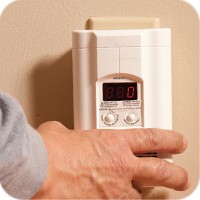
- Install at least one carbon monoxide alarm in your home certified by a certification body that is accredited by the Standards Council of Canada. The alarm will have a certification mark on it, such as CSA, UL and Intertek ETL. Follow instructions for where the alarm should be placed. This type of alarm will alert you early if there is a CO leak in your home.
- Maintain appliances such as furnaces, fireplaces, gas stoves and water heaters so they work properly and are properly vented. Have them inspected by a professional at least once a year.
- Never use barbecues or outdoor/camping stoves indoors. Do not use a kerosene or oil lamp in an enclosed space unless the label clearly says they are made specifically for indoor use.
- Do not start cars, trucks, snowmobiles or other vehicles or let them idle near open doors or windows or in enclosed spaces such as a garage if you have one, even when the garage door is open.
- Never start or run a gas powered lawnmower, trimmer, or snow blower in an enclosed space such as a garage.
- Keep the door between your home and the garage closed.